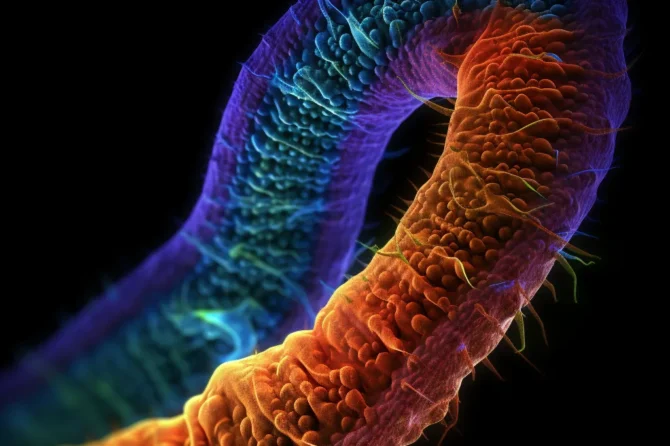Introduction
Protein-protein interactions play a fundamental role in various cellular processes, including signal transduction, gene expression regulation, and protein complex assembly. Understanding the mechanisms and functional implications of these interactions is essential for unraveling the complexities of cellular biology. In recent years, advancements in experimental techniques have provided researchers with powerful tools to investigate protein-protein interactions in a comprehensive and systematic manner.
In this article, we delve into a recent study that employed a combination of experimental procedures to investigate protein-protein interactions, subcellular localization, and functional analyses. By utilizing a diverse range of techniques, including the yeast two-hybrid (Y2H) assay, split-luciferase assay, co-immunoprecipitation (Co-IP), SDS-PAGE, immunoblotting, confocal microscopy, and more, the researchers gained valuable insights into the molecular mechanisms underlying cellular processes. We provide a comprehensive overview of each technique, highlighting the underlying principles, materials used, and step-by-step protocols.
Yeast Two-Hybrid Assay:
Exploring Protein-Protein Interactions The yeast two-hybrid (Y2H) assay is a powerful technique for studying protein-protein interactions. It is based on the reconstitution of a transcriptional activator in yeast cells, which enables the identification and characterization of interacting proteins. In this study, the researchers employed the Golden yeast strain from Clontech and obtained selective media from Coolaber Technology. The Y2H assay protocol, which was previously described, involves the transformation of yeast cells with specific plasmids encoding bait and prey proteins. Through careful experimental design and data analysis, the researchers successfully identified novel protein-protein interactions and gained insights into their functional relevance.
Split-Luciferase Assay:
Visualizing Protein Interactions in Living Cells To determine luciferase activity and visualize protein-protein interactions in a cellular context, the researchers employed the split-luciferase assay. By agroinfiltrating N. benthamiana leaves with agrobacteria carrying the respective plasmids, the researchers were able to monitor luciferase activity using a Tanon 5200CE Chemiluminescent Imaging System. This technique allowed them to visualize protein interactions in real-time, providing spatial and temporal information about protein complex formation. The split-luciferase assay proved to be a valuable tool for studying dynamic protein-protein interactions in living plant tissues.
Total Protein Extraction:
Obtaining Protein Samples for Analysis Accurate and efficient total protein extraction is crucial for various experimental analyses. In this study, the researchers extracted both plant and yeast proteins to investigate their interactions and localization. For plant tissues, fine powder of aerial parts or agroinfiltrated leaf tissues were resuspended in sodium dodecyl sulfate-polyacrylamide gel electrophoresis (SDS-PAGE) loading buffer, boiled, and centrifuged to obtain the protein-containing supernatant. The supernatant was then stored or used directly for further analysis. Similarly, a total protein extraction kit from Coolaber was utilized for yeast protein extraction. The researchers followed the provided protocol to obtain total yeast protein for subsequent experiments.
Co-immunoprecipitation (Co-IP):
Capturing Protein Complexes Co-immunoprecipitation is a widely used technique for studying protein-protein interactions in complex mixtures. In this study, the researchers employed Co-IP to capture and analyze protein complexes. They started by grinding leaf tissues into a fine powder and then preparing the lysate using IP buffer. The lysate was filtered and subjected to sonication and centrifugation to obtain the protein-containing supernatant. The supernatant was then incubated with specific affinity gels, such as Chromotek GFP-Trap or anti-FLAG M2 affinity gel, to capture the target proteins and their interacting partners. The protein-bead complexes were collected, washed, and analyzed using SDS-PAGE and immunoblotting. Co-IP provided valuable insights into protein complex formation and enabled the identification of interacting proteins.
SDS-PAGE and Immunoblotting:
Analyzing Protein Samples SDS-PAGE is a widely used technique for separating proteins based on their molecular weight. In this study, homemade polyacrylamide gels with appropriate percentages were used for protein separation. Following SDS-PAGE, the proteins were transferred to polyvinylidene fluoride (PVDF) membranes using a Trans-Blot Turbo Transfer System. The membranes were then blocked, incubated with specific primary antibodies (e.g., anti-GFP, anti-Myc, anti-SUMO3), washed, and incubated with secondary antibodies conjugated to horseradish peroxidase (HRP). Finally, the protein bands were visualized using an Immobilon Western Chemiluminescent HRP Substrate and a Tanon 5200CE Chemiluminescent Imaging System. Immunoblotting enabled the detection and quantification of specific proteins, allowing the researchers to assess their abundance and investigate changes under different experimental conditions.
Utilizing Antibodies:
Tools for Protein Detection The researchers employed a variety of antibodies to detect and analyze specific proteins in their study. For instance, they used antibodies against GFP, SUMO3, Myc, GAL4 AD, luciferase, RFP, and various other targets. The antibodies were used at specific dilutions and were either polyclonal or monoclonal. HRP-conjugated secondary antibodies were used to enable chemiluminescent detection. These antibodies played a crucial role in identifying and characterizing the proteins of interest and their interactions.
Detection of Phosphorylated Proteins:
Phos-tag Assay Phosphorylation is a vital post-translational modification that regulates protein function and signaling pathways. To detect phosphorylated proteins, the researchers utilized the Phos-tag assay. PVDF membranes were incubated with a biotinylated Phos-tag solution, which specifically interacts with phosphorylated proteins. Streptavidin-HRP was then applied to enable chemiluminescent detection. This approach allowed for the specific detection of phosphorylated proteins, providing insights into signaling pathways and post-translational modifications.
Nucleocytoplasmic Partitioning: Assessing Protein Localization The researchers investigated nucleocytoplasmic partitioning as a measure of protein localization. To analyze protein distribution between the nucleus and cytoplasm, fine powder of aerial plant parts was resuspended in extract buffer. The lysate was filtered, centrifuged, and divided into cytoplasmic and nuclear fractions. Each fraction was mixed with SDS-PAGE loading buffer and subjected to immunoblotting. By comparing protein abundance in the cytoplasmic and nuclear fractions, the researchers gained insights into protein localization and nuclear-cytoplasmic shuttling.
ELISA:
Enzyme-Linked Immunosorbent Assay Enzyme-Linked Immunosorbent Assay (ELISA) is a highly sensitive technique used for the detection and quantification of specific proteins. In this study, the researchers performed ELISA using a polyclonal antiserum to the target protein. They employed a goat anti-rabbit immunoglobulin G conjugated with alkaline phosphatase as the secondary antibody and p-nitrophenyl phosphate as the substrate for color development. ELISA provided a quantitative measure of protein abundance and facilitated the analysis of protein levels under different experimental conditions.
Confocal Microscopy:
Visualizing Protein Localization in Cells Confocal microscopy is a powerful tool for visualizing protein localization and interactions at high resolution. In this study, the researchers used a TCS SP8 LIGHTNING Confocal Microscope to examine fluorescence signals in N. benthamiana leaves. By infiltrating the leaves with agrobacteria carrying specific plasmids, they were able to visualize protein localization and interaction patterns. Confocal microscopy provided detailed spatial information, enabling the researchers to understand the subcellular distribution and dynamics of the proteins under investigation.
Prokaryotic Protein Expression and GST Pulldown:
Analyzing Protein-Protein Interactions The researchers employed prokaryotic protein expression and GST pulldown assays to further investigate protein-protein interactions. They expressed recombinant proteins in E. coli BL21 (DE3) cells using IPTG induction. Trx-His and GST-tagged proteins were purified using Ni-NTA agarose and glutathione agarose, respectively. The purified proteins were then incubated together with GST beads, and the protein complexes were captured. After washing, the bound proteins were eluted, subjected to SDS-PAGE, and analyzed using specific antibodies. The GST pulldown assay provided further evidence for protein-protein interactions and enabled the identification of interacting partners.
Quantitative Analysis:
Densitometry and Image Analysis To quantify protein bands in Western blotting, the researchers performed densitometric analysis using GelAnalyzer 19.1 software. This analysis allowed for the relative quantification of protein levels and facilitated the comparison of protein abundance between different experimental conditions. Additionally, the researchers utilized image analysis software such as Fiji, a version of ImageJ2, for quantitative analysis of confocal microscopic images. Fiji enabled the measurement of fluorescence signals and facilitated the quantification of protein localization and distribution in different cellular compartments.
Phylogenetic Analyses:
Unraveling Evolutionary Relationships The researchers employed phylogenetic analysis to investigate the evolutionary relationships between proteins of interest. Using MEGA 11 software, they constructed a phylogenetic tree based on the neighbor-joining method. The tree was then tested for confidence using the bootstrap method. Multiple sequence alignment was performed using ClustalW, and the resulting alignment was visualized using ESPript3. Phylogenetic analyses provided insights into the evolutionary conservation and divergence of proteins, aiding in the interpretation of their functional significance.
Statistical Analysis:
Assessing Significance All experimental data were subjected to statistical analysis using two-tailed Student’s t-test with Excel 2016 or GraphPad Prism 8.0.2. Statistical analysis enabled the determination of significant differences between experimental groups and provided confidence in the observed results. The mean and standard deviation were calculated, and the results were presented as mean ± SD. The researchers rigorously evaluated the statistical significance of their findings, further strengthening the validity of their conclusions.
Conclusion
In this comprehensive experimental analysis, the researchers utilized a wide range of techniques to investigate protein-protein interactions, subcellular localization, and functional analyses. Through the application of the yeast two-hybrid assay, split-luciferase assay, co-immunoprecipitation, SDS-PAGE, immunoblotting, confocal microscopy, and other methods, they gained valuable insights into the molecular mechanisms underlying various cellular processes. By combining multiple approaches, the researchers were able to elucidate the complex networks of protein interactions and their functional implications.
This study exemplifies the power of comprehensive experimental analyses in unraveling the intricacies of cellular biology. The utilization of diverse techniques and methodologies allowed for a holistic understanding of protein-protein interactions and their role in cellular processes. The results provide a foundation for further research and highlight the importance of employing a multidisciplinary approach in studying complex biological systems.
Future studies building upon this work could focus on expanding the analyses to include additional protein interactions, investigating the functional consequences of specific interactions, and exploring the dynamic changes in protein complexes under different physiological conditions. By continuing to refine and integrate experimental techniques, researchers can deepen our understanding of the intricate web of protein interactions and their contribution to cellular function and disease processes.
In conclusion, the comprehensive experimental analysis described in this study sheds light on the complex world of protein-protein interactions and their implications for cellular biology. Through a combination of innovative techniques and meticulous analysis, the researchers have advanced our knowledge of protein interactions, subcellular localization, and functional characterization. The findings contribute to the broader scientific community’s understanding of cellular processes and pave the way for future discoveries in this fascinating field.





